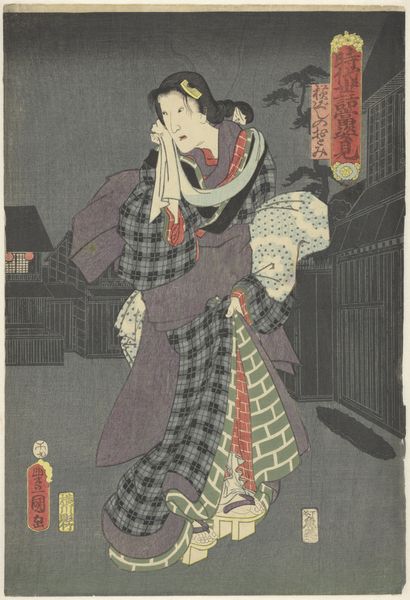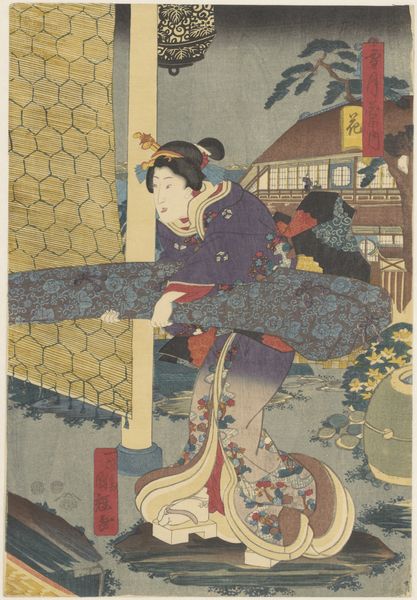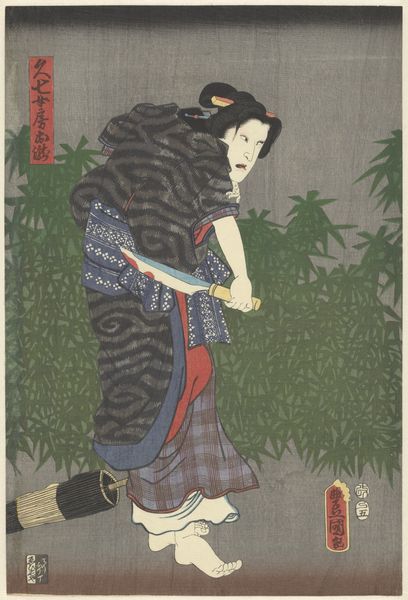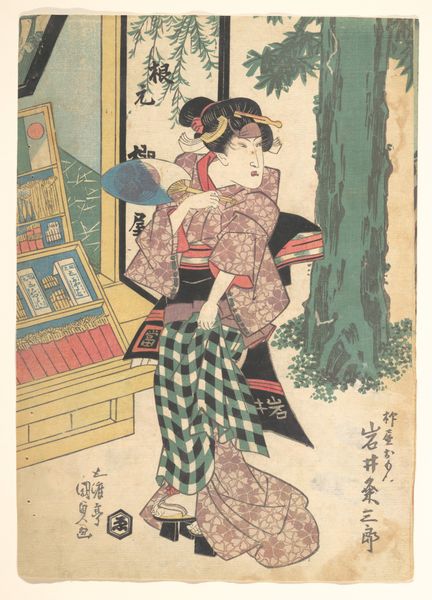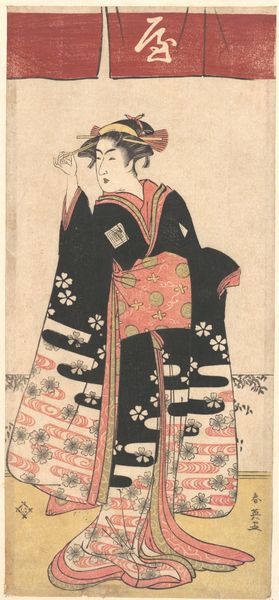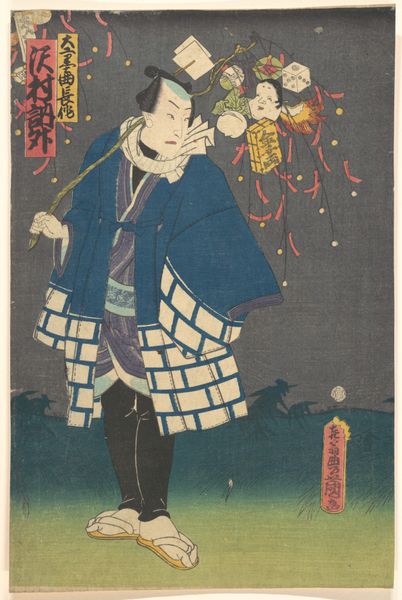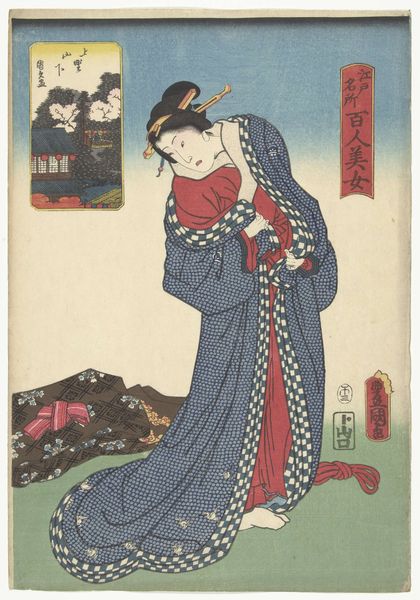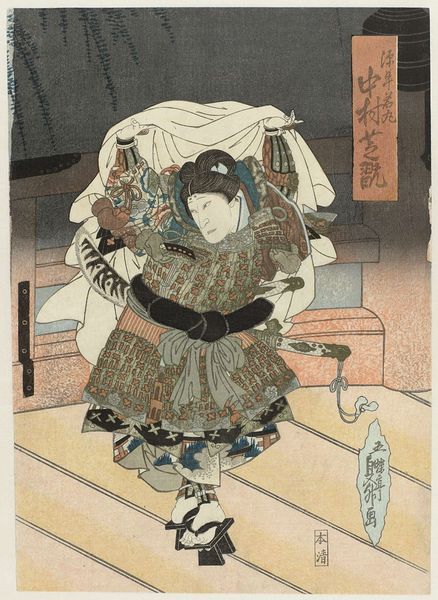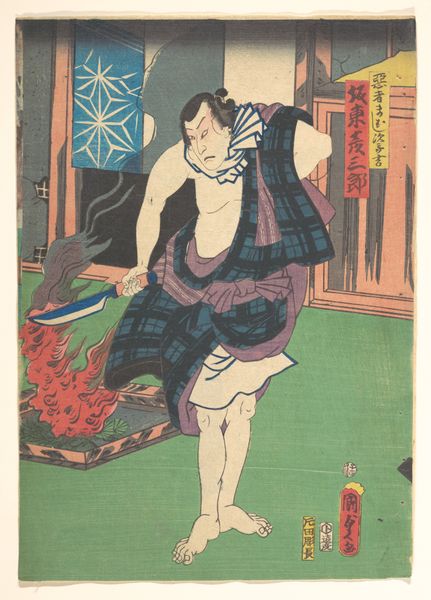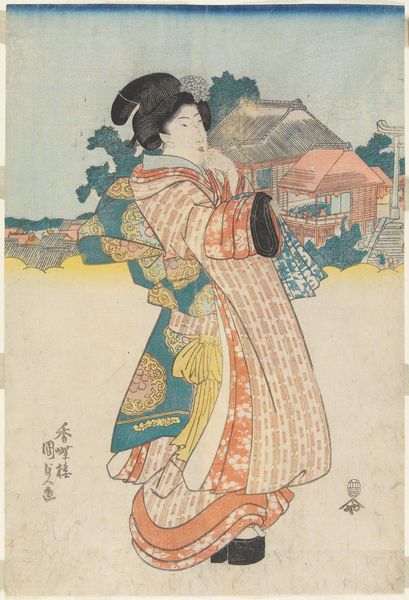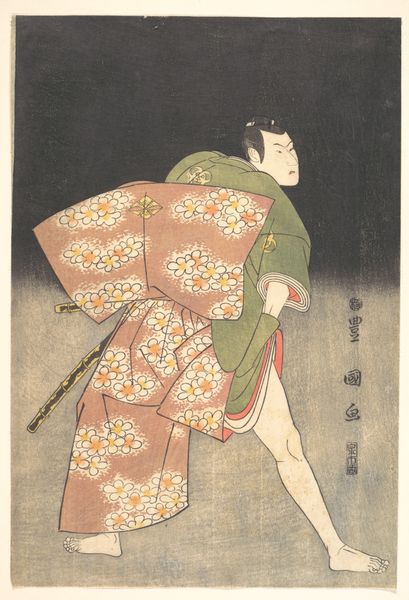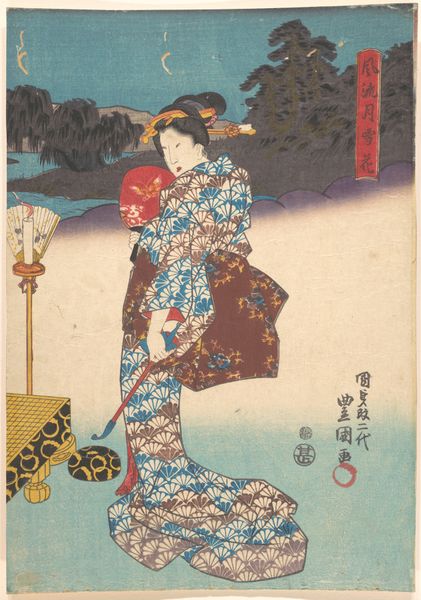![['Ebijiyako in the street at night', 'Portraits from hit plays of both historical stories and modern life'] by Utagawa Kunisada](/_next/image?url=https%3A%2F%2Fd2w8kbdekdi1gv.cloudfront.net%2FeyJidWNrZXQiOiAiYXJ0ZXJhLWltYWdlcy1idWNrZXQiLCAia2V5IjogImFydHdvcmtzL2ZlMmU0NDk2LTM3MmYtNDkzNy1hMTdmLTAyMjQ3NWRkM2NiZi9mZTJlNDQ5Ni0zNzJmLTQ5MzctYTE3Zi0wMjI0NzVkZDNjYmZfZnVsbC5qcGciLCAiZWRpdHMiOiB7InJlc2l6ZSI6IHsid2lkdGgiOiAxOTIwLCAiaGVpZ2h0IjogMTkyMCwgImZpdCI6ICJpbnNpZGUifX19&w=3840&q=75)
['Ebijiyako in the street at night', 'Portraits from hit plays of both historical stories and modern life'] 1858
0:00
0:00
print, woodblock-print
#
portrait
#
night
# print
#
asian-art
#
ukiyo-e
#
historical fashion
#
woodblock-print
#
watercolour illustration
#
genre-painting
Dimensions: height 358 mm, width 243 mm
Copyright: Rijks Museum: Open Domain
Utagawa Kunisada created this woodblock print, likely in the mid-19th century, as part of a series depicting popular Kabuki theater roles. The print offers a glimpse into the vibrant, yet carefully structured, world of Japanese entertainment and its relationship to the broader culture. Here, we see an actor in costume, identified as Ebijiyako, set against a dark, atmospheric street scene. The actor's distinctive makeup and attire immediately signal his profession. Kabuki was a major cultural institution, heavily regulated by the shogunate, which sought to control public expression and morality. Prints like these served as publicity for the plays, but also as a form of cultural commentary, reflecting the social and political climate of the time. To fully understand this print, we might consult playbills, government records, and contemporary accounts of Kabuki performances. The meaning of art is always tied to its social and institutional context.
Comments
No comments
Be the first to comment and join the conversation on the ultimate creative platform.
